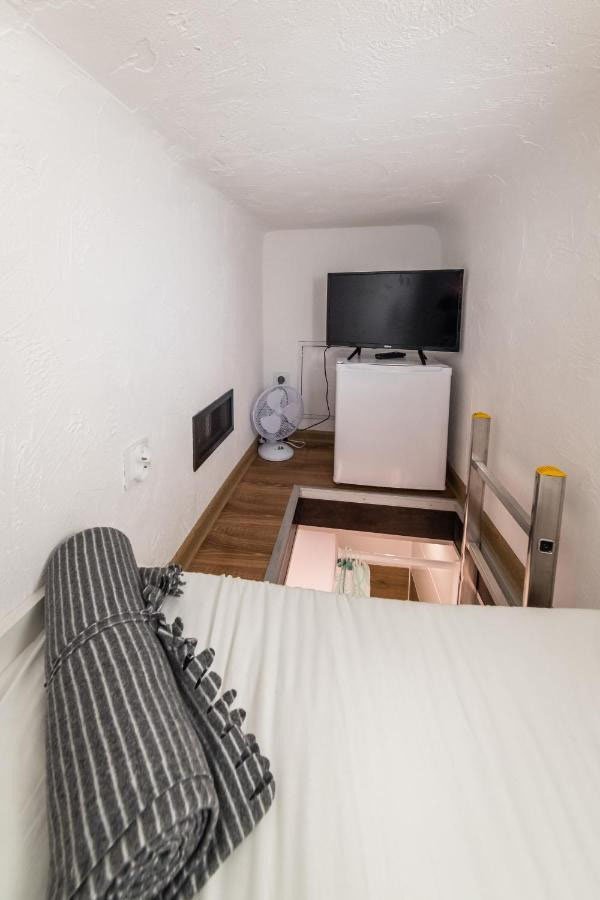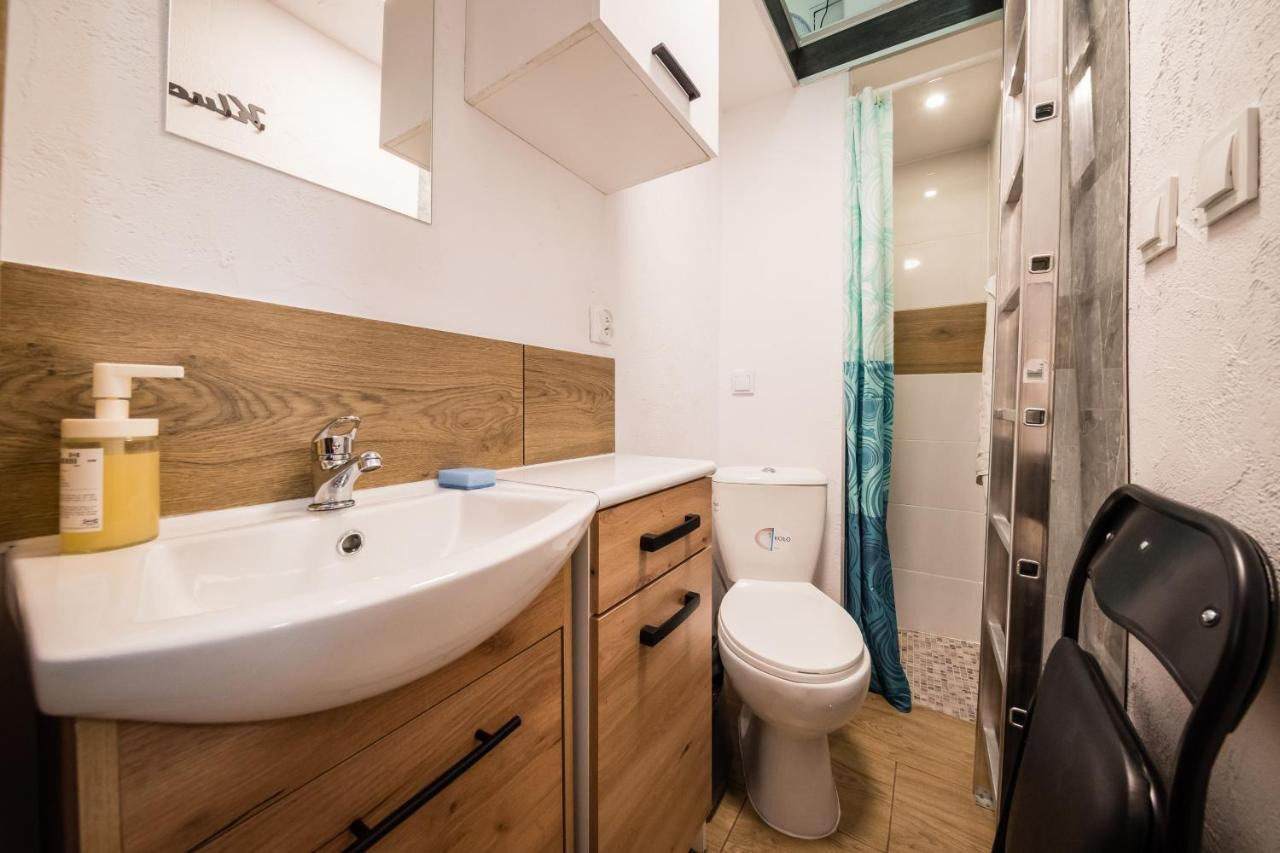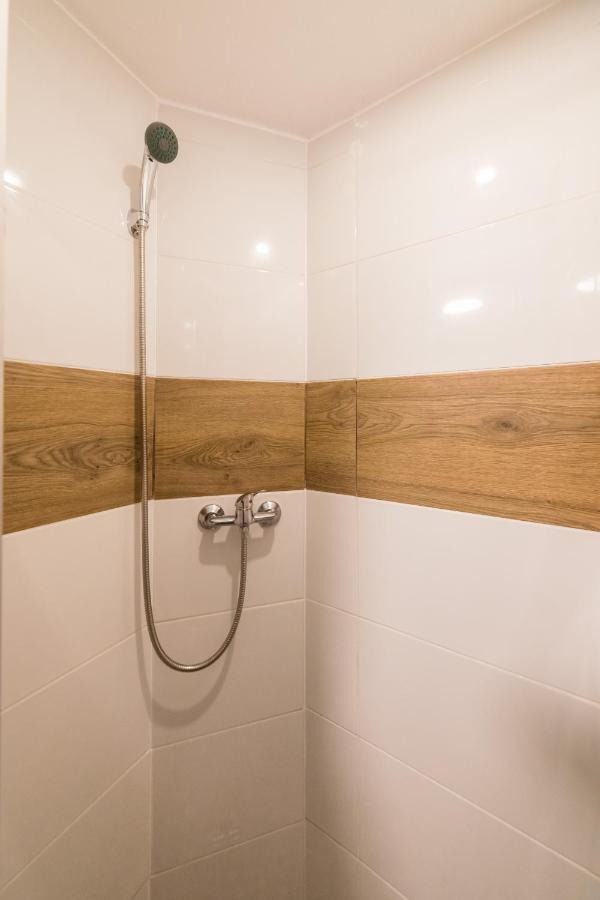The world’s smallest apartment, located at Ul. Józefa Dietla 75 in Kraków, Poland, occupies a mere 26 square feet (2.41 square meters), setting a Guinness World Record for the smallest livable apartment. It features a small double bed, kitchen sink, two-burner cooktop, and essential storage spaces ingeniously integrated into its compact design. The apartment commands a monthly rental of $480 (€445, £385). Ania Kornacka, a Krakow resident who inherited the building, owns it. This mini-loft’s architectural and design specifics reflect a minimalist approach, emphasizing the efficient use of space, natural light, and multi-purpose furnishings to enhance the livability of such a restricted area—materials like prefabricated panels, concrete sheets, and glass. The architectural challenges inherent in designing micro-apartments include optimizing space, ensuring adequate natural light and ventilation, creating sufficient storage, and integrating essential services without compromising the living area’s comfort or functionality. This demand underscores a broader trend towards micro-living in urban centers worldwide, where those seeking to live in the city increasingly prioritize efficient use of space, affordability, and location.
Where is the smallest apartment in the World located?
The smallest apartment in the world is located at Ul. Józefa Dietla 75 in Kraków, Poland. This tiny apartment measures 26 square feet (2.41 square meters) but packs all the necessities into the minuscule space. The GPS coordinates for the building on ul. Józefa Dietla 75, which contains the world’s smallest apartment, are 50°3′34′′N 19°56′8′′E. The apartment holds the Guinness World Record for the planet’s smallest livable apartment. Situated in a five-story building constructed in the early 20th century in Krakow’s Old Town neighborhood, the apartment enjoys a prime location just 1,049 feet (320 meters) from the Main Market Square in one of Krakow’s most popular districts. The living space contains a small double bed, a tiny kitchen sink, a two-burner cooktop, and a small bathroom. Storage space is available under the bed and in several other built-in storage nooks and crannies to utilize every possible inch.
What is the size of the smallest apartment in the World?
The world’s smallest apartment is in Krakow, Poland, and measures 26 square feet (2.41 square meters), making it no larger than a spacious hall closet. The interior height from floor to ceiling is 6 feet (2.1 meters). The petite unit one person can barely stand up and lie in contains a small double bed, a tiny kitchen sink, a two-burner cooktop for cooking, and a tiny bathroom. The total living space is 4 feet (1.5 meters) across by 5 feet (1.6 meters) deep.
What is the price of the smallest apartment in the World?
The tiny record-holding apartment in Krakow, Poland, comes at a monthly rental price of $480 (€445, £385). When divided over the total interior space, the monthly rental cost is $199 (€185, £160) per square meter. Most standard studio apartments in Krakow rent for around $530 (€490, £425) per month on average. The tenant is paying for the convenience of a centrally located, independent living space. There is high demand to rent the record-holding smallest apartment in the world, allowing the landlord to charge a premium rate. Aside from the monthly rent, a security deposit of $960 (€890, £770) is also required. Utilities, including electricity, heat, and water, average $48 (€45, £39) monthly.
How many bedrooms are there in the smallest apartment in the World?

The smallest apartment in the world consists of just a single room that incorporates all living necessities into one compact 26 square foot (2.41 square meter) space. There is no separate bedroom within its dimensions of 4 feet (1.5 meters) across by 5 feet (1.6 meters). The interior height from floor to ceiling is 6 feet (2.1 meters). On the wall opposite the cooking area is the tiny bathroom. Most standard studio apartments at least have defined living and sleeping areas. This micro-apartment does not offer room for that degree of separation.
How many bathrooms are there in the smallest apartment in the World?

The world’s smallest apartment in Krakow has no private bathroom. The resident of this micro-dwelling would need to share bathroom facilities with other tenants in the apartment building. This is a typical arrangement in dense European cities where space is at an absolute premium. Less convenient than an in-unit bathroom, a shared facility helps keep rents affordable.
Who is the current owner of the smallest apartment in the World?
The current owner who leases the microscopic residential unit is Ania Kornacka, a resident of Krakow. She purchased the building on ul. Józefa Dietla, 75, was located in Krakow’s prime Old Town district as an inheritance investment from her grandmother. The Guinness Book of World Records certified that the minuscule apartment in Krakow, Poland, has been owned by the same local Polish family since its original construction in the early 20th century, along with the rest of the building it resides in. The narrow five-story building contains several typical studio units. The tiny 26 square foot (2.41 square meter) apartment touting the record for the smallest in the world generates the most renter intrigue and demand. Ania could charge higher rents for such a uniquely tiny property, and she keeps the rates affordable at around $480 (€445, £385) per month. Ania handles leasing directly for all units in the building, which has been in her family for multiple generations.
Who designed the smallest apartment in the World?
The identity of the original architect behind the design of the tiny record-setting apartment in Krakow, Poland, remains unknown. The apartment is nested on the first floor of a narrow five-story building constructed in the early 20th century at ul. Józefa Dietla 75. The building sits on the edge of the medieval layout of Krakow’s Old Town. The structures along the street likely date back centuries, with extensions and renovations done over time. The same local Polish family has owned the building containing the Guinness Book-certified world’s smallest apartment for multiple generations. Most documentation about the apartments inside was likely lost long ago if official records were ever kept at all.
Who built the smallest apartment in the World?
The exact individuals who constructed the building housing the record-setting world’s smallest apartment in Krakow, Poland, are still being determined. The tiny apartment is situated inside a narrow five-story building located at ul. Józefa Dietla 75 in Krakow’s medieval Old Town. This address resides on the fringe of Old Town, where structures date back hundreds of years, undergoing extensions, expansions, repairs, and modern upgrades over the lifetimes of these enduring vintage buildings. This building, which holds the Guinness Book-certified minuscule apartment, was built in the early 20th century.
What architectural style is the smallest apartment in the World built with?
The architectural style of the world’s smallest apartment in Kraków, Poland, is minimalist and traditional. The apartment is located on the fifth floor of a classic stone building, which suggests that the building itself may exhibit characteristics of conventional or historic architectural styles common to the region and period when it was constructed. The interior design focuses on minimalism and maximizing the utility of every square inch. Using a two-story layout with a sleeping area on the second floor and a kitchen and bathroom on the first floor is a clever design solution to make the most of the available vertical space.
What materials are preferred for small-scale apartments in the World and why?
The materials preferred for small-scale apartments in the World are wood, metal, and concrete. Firstly, wood is an optimal material for small spaces. Wood has excellent flexibility and low weight, making it ideal for resisting earthquakes and reducing foundation requirements. Wood also has a high insulating capacity, conducting heat up to 6 times less than brick and 15 times less than concrete. This helps retain energy and reduce heating/cooling costs. Wood is affordable, decorative, and environmentally sustainable through replanting efforts. Secondly, metal offers durability and aesthetic appeal. Metal furniture withstands climate changes and is ideal for outdoor space. Metal building materials are also long-lasting and affordable despite their robustness, and their lightweight nature makes them easy to handle. Metal is highly customizable with endless style and color options to make small spaces stand out. Lastly, concrete delivers exceptional strength, lifespan, and insulation. Concrete resists weathering, fire, insects, and minor damages. Its minimal air infiltration reduces unwanted moisture while facilitating indoor air quality control. Concrete walls also enable noise reduction and temperature regulation through thermal mass effect in hot/cold climates. Precast concrete, in particular, allows quick construction times to deliver affordable housing units rapidly.
What furniture solutions are used to maximize space?
Listed below are the furniture solutions used to maximize space:
- Sofa Beds: Sofa beds are used to maximize the space of small apartments. It serves dual purposes: daily seating and sleeping arrangements by night. Their functionality is central to living comfortably in compact spaces.
- Under-bed Storage: Under-bed storage tackles the solution of limited storage to maximize the space of small apartments. This solution is directly tied to maximizing every inch of available space, making it highly relevant to small-space living.
- Corner Shelves: Corner Shelves are used to maximize space in small apartments. Utilize otherwise wasted corner spaces, directly contributing to increased storage and display options in small apartments.
- Sliding Doors: Sliding doors are used to maximize space in small apartments. Directly address the issue of space conservation by eliminating the need for clearance areas required by traditional doors. Their application in small apartments is a crucial strategy for enhancing spatial efficiency.
How is the kitchen area designed to be functional in such a restricted space?
The kitchen area in an apartment in Kraków, Poland, can be designed to be helpful in several ways. Firstly, the kitchen maximizes vertical storage with tall shelving units that reach the ceiling, storing dry goods and eliminating upper cabinets that block light. Secondly, the kitchen opts for partial-depth lower cabinets to enable an open feel while fitting appliances and maximizing floor space visibility. The slim cabinets are customized with pull-out drawers and racks to neatly organize contents without wasting an inch. Thirdly, given the one-wall space constraint, the kitchen positions the sink, stove, and fridge in a single-file layout. This allows efficient food preparation assembly-line style. Lastly, the kitchen includes a slim rolling cart as a movable prep area for multifunctionality. The cart can be shifted around to add temporary counter space for chopping, then slid aside to make room when not in use. It even has storage baskets below to tuck small appliances out of sight.
What designs are used for the bathroom in a minimal space setting?

Several designs are used for the bathroom in a minimal space setting. Firstly, wall-mounted fixtures are a common choice. Wall-mounted toilets and sinks save precious floor space and make the bathroom appear more prominent. Using a wall-mounted toilet also allows for easier cleaning of the floor area, contributing to a sense of spaciousness and hygiene. Secondly, showers are often designed without tubs and with frameless glass panels or even as wet rooms, where the entire bathroom is designed to handle water spray. This approach eliminates the need for shower curtains or doors that otherwise take up space and visually clutter the room. Lastly, storage is carefully considered to avoid overcrowding. Recessed shelves or niches in the shower area provide space for toiletries without encroaching on the shower space.
What are the main architectural challenges in designing such a small living space?
The main architectural challenges in designing such a small living space are listed below:
- Maximizing Usable Space: The main challenge in designing the world’s smallest apartment in Kraków, Poland, is maximizing usable space within the minimal square footage. Architects must creatively use every inch, incorporating multi-functional furniture and built-in storage to ensure the space meets all the occupant’s living needs without feeling cramped.
- Natural Lighting and Ventilation: Ensuring adequate natural lighting and ventilation in the world’s smallest apartment presents a significant challenge. Architects must strategically place windows and use skylights to bring in natural light and promote air circulation, enhancing the apartment’s livability and perceived spaciousness.
- Privacy Considerations: Achieving a sense of privacy within a small living space is a critical challenge. Design solutions must cleverly separate different functional zones, such as sleeping and living areas, without traditional walls, possibly using partitions, curtains, or multi-level designs to create private spaces.
- Storage Solutions: Integrating sufficient storage without sacrificing valuable living space is a major architectural challenge. Innovative solutions like hidden compartments, built-in shelving, and multi-functional furniture are essential to keep the apartment organized and clutter-free.
- Building Codes and Regulations: Navigating building codes and regulations for a small living space can be complex. Architects must ensure that the design complies with local zoning laws, safety standards, and accessibility requirements, which can be particularly challenging in a small footprint.
Is the World’s smallest apartment part of a condominium complex?
No, the world’s smallest apartment in Krakow, Poland, is a standalone entity known as a Micro Tenement House, not part of a condominium complex. This small residential building has a footprint of a narrow and tight plot of land. The term “tenement” refers to a multi-occupancy building. The Micro Tenement House is designed to maximize the use of a small space in an urban setting. The building is surrounded by other properties, which is typical for the dense urban fabric of historic Krakow. It operates independently rather than as part of a communal condominium property with shared amenities and governance.
What is the market demand for such small apartments in the World?
The demand for compact, affordable housing units in Krakow is growing substantially. Average apartment prices reached $4150 (€3380, £2980) per square meter, making tiny studios popular, especially among students and young professionals. Krakow is home to over 200,000 university students across 23 institutions of higher education. Krakow has developed into a significant business services hub, adding around 15,000 jobs in the technology and outsourcing sectors in 2018 alone. This influx of young knowledge workers further propels the demand for small starter apartments. Current vacancy rates are 2-4% for smaller units in desirable central districts. If multiple projections for 30-50% workforce growth in Krakow’s critical industries over the next decade prove accurate, demand for affordable apartments suitable for students and young professionals could exceed 10,000 units annually through 2030.


